 The Hunt for Harald - Danish
The Hunt for Harald - DanishAfter completing this lesson you will be able to:
After completing this lesson you will be able to:
Listen to Bob and Rasmus who are talking about the weather and what it is like in Denmark and Hawaii. Try to identify the various expressions used about the weather. Try to keep an eye on the patio as well.
Listen to Bob and Rasmus who are talking about the weather and what it is like in Denmark and Hawaii. Try to identify the various expressions used about the weather. Try to keep an eye on the patio as well.
 |
Da hans buskort udløb | |
 |
Da hans bil ikke ville starte | |
 |
Under en snestorm |
The Danish weather can be very unpredictable. However, as we also say, "there is no bad weather, only bad clothing."
Denmark has four seasons:
Summer: June, July and August.
Autumn: September, October and November.
Winter: December, January and February.
Spring: March, April and May.
Summers are usually warm and winters cold, snowy and windy, so you will get to try a lot of different weather conditions.
The Danish weather can be very unpredictable. However, as we also say, "there is no bad weather, only bad clothing."
Denmark has four seasons:
Summer: June, July and August.
Autumn: September, October and November.
Winter: December, January and February.
Spring: March, April and May.
Summers are usually warm and winters cold, snowy and windy, so you will get to try a lot of different weather conditions.

 Answered
Answered


 Answered
Answered


 Answered
Answered


 Answered
Answered


 Answered
Answered


 Answered
Answered


 Answered
Answered


 Answered
Answered

 | Forår | |
Vinter | ||
Efterår | ||
Sommer |



 Answered
Answered


 Answered
Answered


 Answered
Answered


 Answered
Answered

If you want to ask someone about the weather, you can say:
If you want to ask someone about the weather, you can say:

 Answered
Answered


 Answered
Answered

When describing the weather, you can say: "det er..."
When describing the weather, you can say: "det er..."

 Answered
Answered


 Answered
Answered


 Answered
Answered


 Answered
Answered


 Answered
Answered


 Answered
Answered


 Answered
Answered


 Answered
Answered


 Answered
Answered


 Answered
Answered


 Answered
Answered

In Denmark the temperature is measured in degrees celsius:
In Denmark the temperature is measured in degrees celsius:

 Answered
Answered


 Answered
Answered


 Answered
Answered

You can ask about the weather using the verb "bliver:"
You can ask about the weather using the verb "bliver:"

 Answered
Answered


 Answered
Answered


 Answered
Answered

You can also describe the weather using "bliver:"
You can also describe the weather using "bliver:"

 Answered
Answered


 Answered
Answered


 Answered
Answered

There is a difference between the words "når" and "hvornår" in Danish:
Hvornår is used in direct and indirect questions:
Direct: "Hvornår kommer du?"
Indirect: "Jeg ved ikke hvornår han kommer."
Da is used about single events in the past:
"Da jeg kom hjem, var du gået."
"Da jeg var barn, ville jeg spille fodbold."
Når is used about future, repetitive or more general events:
Future: "Jeg spørger ham, når jeg kommer hjem."
Repetitive: "Når jeg kommer hjem, drikker jeg en kop te."
General: "Når man er barn, vil man bare lege."
There is a difference between the words "når" and "hvornår" in Danish:
Hvornår is used in direct and indirect questions:
Direct: "Hvornår kommer du?"
Indirect: "Jeg ved ikke hvornår han kommer."
Da is used about single events in the past:
"Da jeg kom hjem, var du gået."
"Da jeg var barn, ville jeg spille fodbold."
Når is used about future, repetitive or more general events:
Future: "Jeg spørger ham, når jeg kommer hjem."
Repetitive: "Når jeg kommer hjem, drikker jeg en kop te."
General: "Når man er barn, vil man bare lege."

 Answered
Answered


 Answered
Answered


 Answered
Answered


 Answered
Answered


 Answered
Answered


 Answered
Answered


 Answered
Answered


 Answered
Answered


 Answered
Answered

 |
Forkert | |
 |
Rigtigt |
Ask Peter what the weather is like:
Ask Peter what the weather is like:
 Correct
Correct Wrong
Wrong Answered
AnsweredAsk Peter what the weather will be like tomorrow:
Ask Peter what the weather will be like tomorrow:
 Correct
Correct Wrong
Wrong Answered
AnsweredLook at the picture and answer Peter's question:
Look at the picture and answer Peter's question:

 Correct
Correct Wrong
Wrong Answered
AnsweredLook at the picture and answer Peter's question:
Look at the picture and answer Peter's question:

 Correct
Correct Wrong
Wrong Answered
Answered
 |
Fahrenheit | |
 |
Celsius |
Ask Peter when you are going to the beach:
Ask Peter when you are going to the beach:
 Correct
Correct Wrong
Wrong Answered
Answered
 |
Vinter - forår - sommer - efterår | |
 |
Sommer - forår - vinter - efterår | |
 |
Efterår - sommer - vinter - forår | |
 |
Forår - sommer - vinter - efterår |
 |
September | |
 |
Juni | |
 |
Marts | |
 |
December |
Tell Peter that you do not bike, when it is raining:
Tell Peter that you do not bike, when it is raining:
 Correct
Correct Wrong
Wrong Answered
Answered |
Section completed |  |
| Exercise | Result | Your answer | Correct answer |




 Vifin Course Creator
Vifin Course Creator